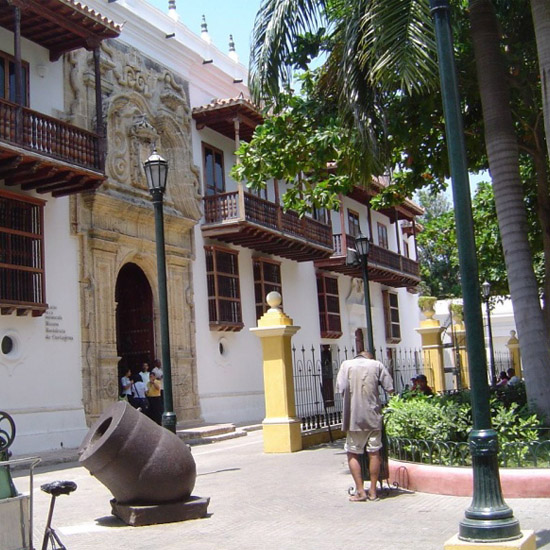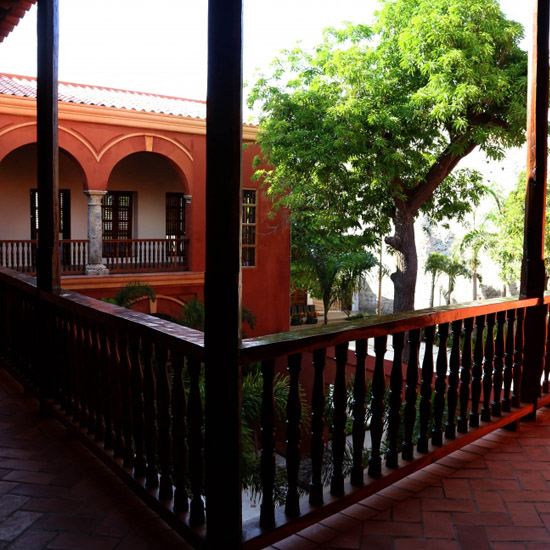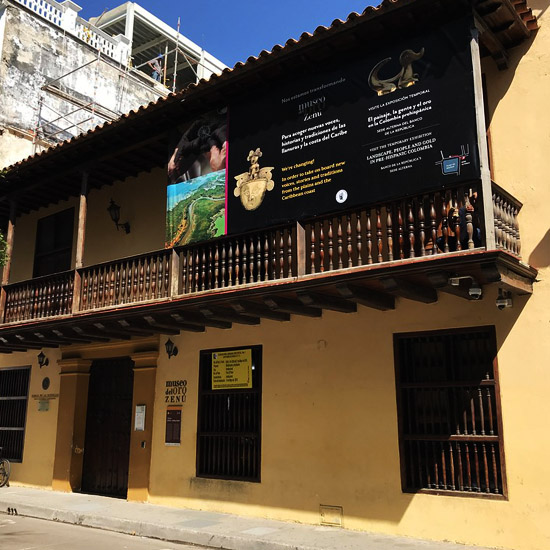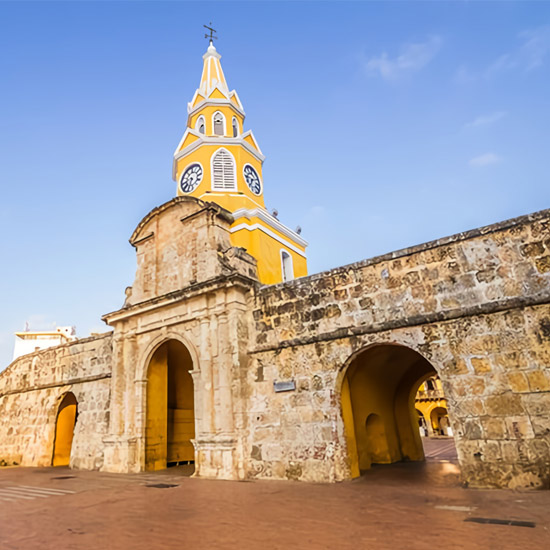Cartagena, a city with history and tradition
Cartagena de Indias, jewel of the Colombian Caribbean, is a destination that masterfully fuses its rich history with vibrant traditions that make it a unique place and fascinating. Founded in 1533, this city has witnessed countless events that have shaped not only its development, but also that of an entire country.
The history of Cartagena is written in its walls, forts and cobbled streets. The Walled City, a UNESCO World Heritage Site, is a labyrinth of narrow streets and colorful colonial facades that tell stories of pirates, conquests and resistance. Every corner of this historic center transports visitors to bygone eras, when Cartagena was a vital port for transatlantic trade and a bulwark against attacks by privateers and buccaneers.
One of the emblems of the city is the Castillo de San Felipe de Barajas, an imposing fortress built by the Spanish to protect themselves from invaders. This majestic building not only offers a panoramic view of the city and the Caribbean Sea, but also invites visitors to explore its tunnels and learn about the military strategies of the colonial era.
But Cartagena not only lives off its glorious past; Its traditions are very present in the daily lives of its inhabitants. The city is a hive of festivities, rhythms and flavors that reflect a rich and diverse culture. Among the most notable celebrations are the Barranquilla Carnival, which although it has its epicenter in the neighboring city, influences the festive spirit of the people of Cartagena, and the International Music Festival, which every January brings together talented musicians from all over the world in historical settings.
Now, if you want to get to know Cartagena beyond its beaches and soak up a little of its history, these are the places you should visit on your way through the walled city.
Inquisition palace:
Located in the heart of the Walled City of Cartagena de Indias, it is one of the most emblematic buildings steeped in history in the city. Built in 1770, this colonial palace served as the headquarters of the Tribunal of the Holy Office, an institution of the Catholic Church dedicated to the persecution of heresy and other crimes against the faith.
From the outside, the Palace of the Inquisition impresses with its imposing baroque façade, adorned with wooden balconies and a large stone portal that symbolizes the authority and power of the institution that it housed. Upon entering, visitors find a somber and solemn atmosphere, which contrasts with the architectural beauty of the building.
The interior of the palace is made up of several rooms that have been restored and converted into a museum. This space offers a detailed and sometimes chilling view of the practices and procedures of the inquisitorial court. Visitors can see torture instruments used to extract confessions, as well as documents and records from trials that took place in these same facilities.


House of the Marquéz de Valdehoyos
The House of the Marqués de Valdehoyos, located in the historic center of Cartagena de Indias, is one of the most representative buildings of the city's colonial architecture. Built in the 18th century, this majestic residence reflects the splendor and opulence of a time when Cartagena was a prosperous port of transatlantic trade.
The house is named after its most famous owner, Don José de Torres y Campuzano, who held the title of Marquis of Valdehoyos. This Spanish nobleman was a prominent merchant who played a crucial role in the city's economy, especially in the trade of slaves and other products.
One of the most interesting aspects of the House of the Marquis of Valdehoyos is its history linked to notable characters. It is said that Simón Bolívar, the Liberator, stayed in this residence during his stay in Cartagena, which adds significant historical value to the place. In addition, the house has been the scene of important social and political events throughout the centuries.
Today, the Casa del Marqués de Valdehoyos is a museum and cultural center that attracts tourists, historians and architecture lovers.
Gold museum:
The Zenú Gold Museum, located in the emblematic Plaza de Bolívar in Cartagena de Indias, is a cultural treasure that offers visitors a deep immersion in the archaeological and cultural wealth of the pre-Columbian civilizations of the region. This museum, which is part of the Museum network of the Bank of the Republic of Colombia, is dedicated to the preservation and exhibition of the legacy of the Zenú people, one of the most significant indigenous cultures in the country.
From the moment you enter the museum, you perceive an atmosphere of reverence and admiration for the ancient civilizations that inhabited these lands long before the arrival of the Spanish colonizers. The colonial-style building provides a suitable environment for the exhibition of the valuable pieces that are part of the museum's collection.
The permanent exhibition of the Zenú Gold Museum is organized in a didactic and chronological way, allowing visitors to follow a journey that covers thousands of years of history. The display cases are filled with impressive artifacts, including intricate pieces of gold, ceramics and other ritual objects that demonstrate the advanced technology and sophisticated art of the Zenúes.


Clock tower
The Clock Tower, also known as "Clock Gate" or "Boca del Puente," is one of the most iconic and photographed monuments in Cartagena de Indias, Colombia. Located at the main entrance to the Walled City, this tower is not only a historical symbol, but also an architectural landmark that connects the colonial past with the city's vibrant present.
Built in the 17th century, the Clock Tower originally served as the main access gate to the walled city, protecting citizens from pirate and enemy attacks. The current structure, however, was completed in 1888, when the clock that gives it its name was installed. This clock, with its classic hands and Roman numerals, continues to work and sets the pace of daily life in Cartagena.
The architecture of the Clock Tower combines colonial and neoclassical elements. The bright yellow tower rises above the Clock Gate with a symmetrical and elegant design. The arches that make up the base of the tower allow pedestrian access, and its robust and solid design has withstood the passage of time and the attacks of the tropical climate.
Cartagena de Indias is a city that captivates those who visit it with its combination of history, tradition and natural beauty. It is a destination where every street and every corner tells a story, and where traditions are lived with intensity and joy. Without a doubt, Cartagena is a Caribbean treasure that offers an unforgettable experience to everyone who discovers it. The city is a hive of festivities, rhythms and flavors that reflect a rich and diverse culture. Among the most notable celebrations are the Barranquilla Carnival, which although it has its epicenter in the neighboring city, influences the festive spirit of the people of Cartagena, and the International Music Festival, which every January brings together talented musicians from all over the world in historical settings.
Posted in: News



Leave a comment